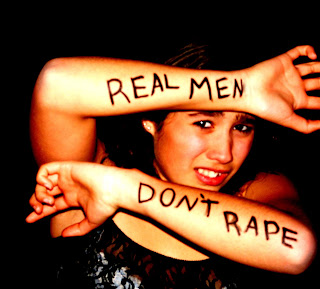Kiev, Ukraine (CNN) -- Sergei stood on a small sheet of ice in the Dnieper River and breathed in the icy air hard. He had escaped, but that relief was overwhelmed by both the pain of leaving his homeland and the fear he might not survive the rest of his perilous journey.

He was wanted, again, by Belarusian police. He had already been detained last summer and was beaten in custody, all for protesting against the election victory declared by President Alexander Lukashenko. Fellow protesters he'd spent time in detention with had just been arrested, and it was clear the police would soon come for him again. Reluctantly, he knew he had to flee.
His was a particularly remarkable run to freedom. He crossed the border into Ukraine illegally, and was not able to walk through the forest and across sheet ice, like many before him had done. In a hurry, and surrounded by melting ice, Sergei put on a wetsuit and flippers he had bought -- and swam.
In a video he filmed on his phone half-way through his two-hour journey, on New Year's Eve, he recorded part of his escape, which involved not only swimming in freezing temperatures and through dense reed, but stumbling over sheet ice and crawling through thick sludge. Such was his desperation to leave.
"My socks are freezing right to the ice. I will try to crawl there and hope that I will not freeze," he said at one point in his video.
"I'm navigating by the stars," he said, audibly cold. "The feeling is indescribable, and I am all alone here."
Hundreds of thousands of Belarusians attended mass protests across the country last year following Lukashenko's declaration of victory in the August vote. The US and EU declared the vote fraudulent and imposed sanctions on Belarusian officials over the fraud and the brutal crackdown that followed.
Sergei -- who asked CNN not to reveal some details of his story and his real identity -- has now claimed asylum in another country, and he wanted to share his story with CNN so that the relatives he left behind might one day read what had happened to him.
"I left my country, my friends and family, with the bitterness of defeat," he said. "I simply became a refugee and had to start again, as if all I had achieved for years was suddenly nothing. To this day, I am mentally exhausted, and sleepless worrying about those left behind."
CNN has spoken to several other Belarusians who have fled the repression of Lukashenko's regime, illegally across the border into Ukraine, as part of a two-month investigation into the crackdown inside the country. In dozens of interviews, protesters and opposition activists have spoken of torture -- from systematic beatings, to rape with a police baton.
Defectors from the police force have also supplied CNN with videos from the police's own archives -- bodycam, dashcam and surveillance footage -- that display the extraordinary ferocity of riot police against protesters who are unarmed and peaceful, many of them teenagers.
The Lukashenko regime has, activists say, slightly softened its tactics in the past weeks, as fear has gripped the opposition movement. Yet there are concerns among activists the crackdown will intensify again ahead of a nationwide call to the streets on March 25.

The fate of the Belarusian protest movement has gained greater significance in the past months as anti-government protests spread inside neighboring Russia against the attempted murder and imprisonment of Alexey Navalny.
Russian President Vladimir Putin swiftly moved to support Lukashenko in August with a $1.5 billion loan and other unspecified assistance. The Belarusian protests, however, have continued. Analysts say the Kremlin is concerned both by a persistent protest movement for democracy on its doorstep, and the impact of unprecedented levels of police violence on how a younger generation of Belarusians view Moscow.
After being presented with a summary of CNN's findings, a State Department spokesperson said the US "strongly condemns the months-long post-election brutality carried out by the Lukashenka regime against peaceful protesters." The statement added there were over 500 documented cases of severe abuse, 290 political prisoners and "a number of individuals still reported missing."

"These violent actions have destroyed the Belarusian authorities' legitimacy among their own people and the international community," they said, demanding the "immediate release of political prisoners and all those unjustly detained, and ... for those responsible for severe abuses to be held to account."
'He cut my using this knife'
The police dashcam footage begins with a police car following a white SUV full of protesters. It is September 13, 2020, and the vehicle is carrying activists away from a demonstration in central Minsk. The car pulls over, and then the devastating police onslaught begins.
The footage shows batons hitting the car's windows. A police officer fires a live round into the vehicle. The protesters are yanked out violently, and forced to lie face down on the ground. Two men in the group are bleeding, one heavily, and another from his cheek after the side of his face is ground into the asphalt. The detainees lie motionless. Sometimes their heads are pulled back and they state their names.
A police body cam shows an officer busy treating a small cut on his hand from the glass. The heavily bleeding protester is eventually given a bandage for his head.
The scene -- in video given exclusively to CNN by BYPOL, an opposition activist group of former Belarusian police officers who have defected -- is one of dozens they have released that detail police ferocity. In some, detainees are seen on camera, visibly beaten, and marked with red paint, a grim sign of the police's "traffic lights" system of grading protesters in detention. Those painted red should receive the worst treatment.
Sexual assault allegations have also been made by men and women against the police. Andrey, a protester from Minsk, told CNN he was raped with a police baton in a bid by officers to make him unlock his phone. They wanted the identity of his fellow protesters, he said, asking that some details of his experience and real name not be disclosed for his safety.
Andrey says he refused to give the password, and was beaten. "They just hit me again. At this time, I probably had brain trauma, as I started to feel really dizzy. It was hard to move at all," he said.
The police officer then threatened to assault him with his baton, asked his colleagues for a condom to sheath the weapon, and took a knife from a colleague. "He cut my underwear using this knife. He asked me again to give him the password. I refused again, and then he did what he did."
Andrey felt pain, but also shock that a person could do this to another. "It's not just police anger -- they train to do this," he said. "We are just seeing it now at a huge scale for the first time. It's touched nearly every family in Belarus now."
The Belarusian Ministry of Internal Affairs, Ministry of Foreign Affairs and the Prime Minister's Office did not immediately respond to CNN's request for response to what the footage of police tactics and violence shows and the allegations of abuse made.
Mass arrests at protests in Belarus are also often met with such brutalities. Another leaked police video from BYPOL shows the aftermath of an October protest, in which dozens of demonstrators are forced to stand in a packed police station corridor, facing the wall, their heads bowed, some bleeding on the walls, others suffering from beatings or tear gas they appear to have been exposed to in the earlier protest.
In the video, the police officer passes between detainees asking for their details, and why they were at the protest. One man has had seven teeth smashed out. They are all visibly shaken, and the majority would go on to face criminal charges for protesting, activists said.
The footage also chillingly shows police walking over the unconscious body of a teenage boy on the floor. CNN has learned the detainee likely suffered from an epileptic fit, and was left on the floor by police, who pass over him. Witnesses said the boy was occasionally kicked by police to see if he was responsive. "Are you a boy or girl?" one witness recalled the police shouting. The minor was later released from police custody, according to witnesses, who did not want to be named.
Police in that central station that night were also busy locating those who had escaped riot police, CNN has learned. One was Anya, a teenager, who also did not want to reveal her real name for her safety.
She fled an advancing line of riot police, who were throwing stun grenades at protesters. The explosion that caught her was captured on video.
"I didn't fall," she said. "I froze like a deer. I just stood, thought, breathed, looked around." She said she did not believe she was deliberately targeted, and was swiftly put in a taxi by protesters as the ambulances nearby were overloaded.
In hospital, she was put next to a man who had been trampled by police until his hip broke, she said. "I started screaming that I need help," she said. "Seven people came in the room. Everyone looked at me and at my body. Like 'Wow. What happened to you?' They didn't help. They just looked at me."
Doctors gave her basic treatment and painkillers, but also prioritized a blood alcohol test and told the police of her whereabouts and injuries. She feared for her safety and left with her mother. But the police were not done with her, she said.
She shared with CNN images of the injuries to her legs as she lay on a couch at home. That evening, her phone rang.
"It was the police asking where I had been," Anya said. "I began making up stories. They said they would come and get me, a unit of them. And if they take me, I thought, then I can say goodbye to my limbs, because no one will look after me. I was worried they would torture me on my injuries."
She left Belarus shortly afterwards and shows CNN the fragments of grenade removed from her leg. One fragment is still lodged in her thigh.
Anya hopes for change in Belarus for her generation, and said that while the current peaceful protests haven't worked, it has led to an awakening. "There is a saying among Belarusians now that we didn't really know each other until the summer," she said, of the protests' beginning.
Her generation's desire for wholesale change is a thorn not only in Lukashenko's side, but also the Kremlin's. Some analysts suggest Putin is wary of siding too closely with Lukashenko's brutal crackdown, in case it turns younger Belarusians against Moscow permanently.
For that, it may be too late.
"Lukashenko wouldn't be so arrogant and cruel without the assurance of Russia always having his back," Anya said.
"We are not their people, we are strangers. Russia does not care what happens to us."












 © Reuters/STRINGER Rani Khan looks at one of her students during a tailoring lesson in Islamabad
© Reuters/STRINGER Rani Khan looks at one of her students during a tailoring lesson in Islamabad

